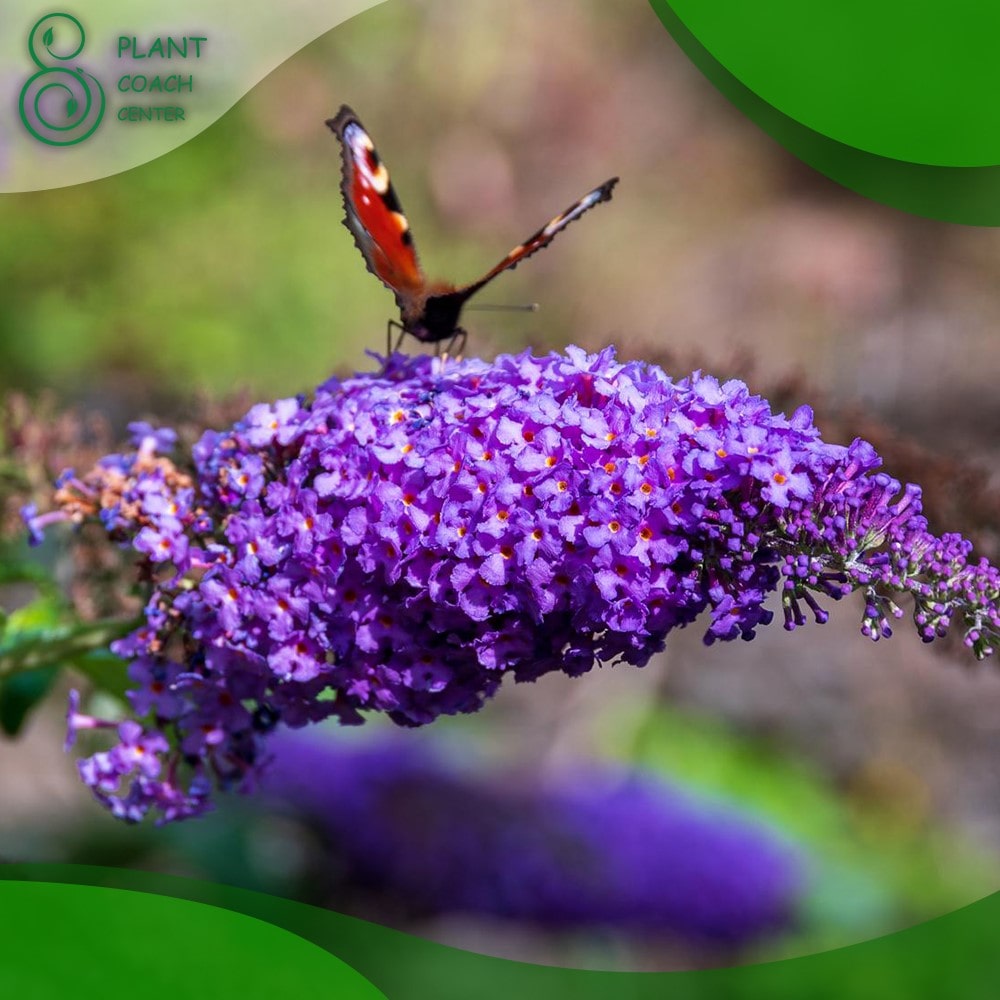Butterfly bushes, scientifically known as Buddleja, are enchanting flowering shrubs that attract a myriad of beautiful butterflies to your garden. These plants are renowned for their vibrant blossoms, delightful fragrance, and ability to create a haven for pollinators. While growing butterfly bushes can be a rewarding experience, knowing when to cut them back is crucial for their health and continued blooming. In this comprehensive article, we will delve into the art of pruning butterfly bushes, exploring the optimal timing, techniques, and factors influencing the process.
Understanding the Importance of Pruning
Pruning plays a vital role in maintaining the health and vigor of butterfly bushes. By selectively removing old or damaged growth, pruning encourages new growth, improves overall plant shape, and enhances flower production. Additionally, it helps prevent diseases, maintains an appropriate size for your garden, and promotes longevity. However, it’s essential to approach pruning with care and knowledge to ensure the best results for your butterfly bushes.
Purpose of the Article
The purpose of this article is to guide you through the intricacies of pruning butterfly bushes, answering common questions, and providing detailed information on when and how to cut back these magnificent plants. From understanding the biology behind pruning to learning about specific varieties and their unique requirements, we will equip you with the knowledge needed to confidently care for your butterfly bushes throughout the year.
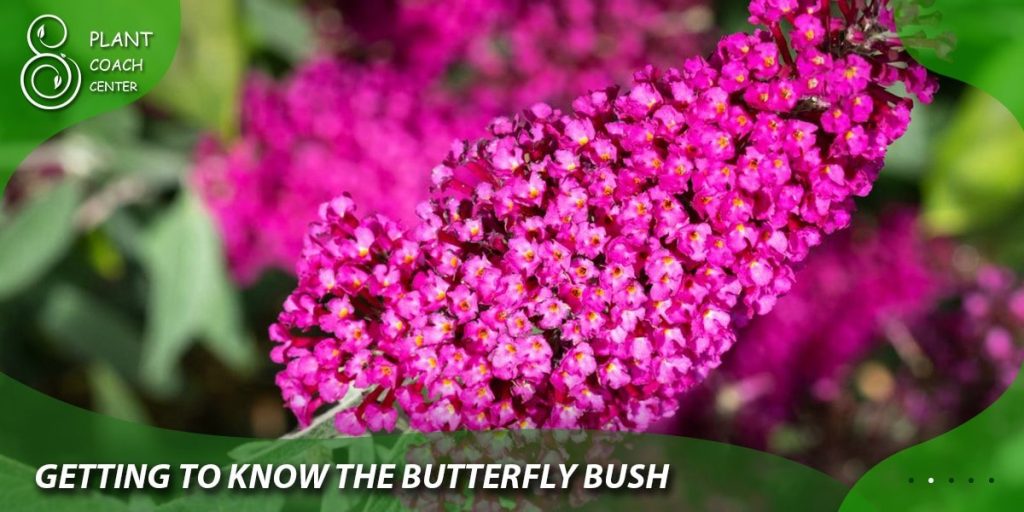
Getting to Know the Butterfly Bush
Botanical Background
Butterfly bushes belong to the genus Buddleja, which comprises over 100 species of flowering shrubs and small trees. Native to various regions worldwide, including Asia, Africa, and the Americas, they are valued for their ornamental beauty and ability to attract butterflies. The most commonly cultivated species is Buddleja davidii, featuring long panicles of colorful blossoms.
Butterfly Bush Varieties and Cultivars
Over the years, numerous cultivars and hybrids of Buddleja davidii have been developed, offering a wide range of flower colors and growth habits. Popular cultivars include ‘Black Knight’ with deep purple flowers, ‘Royal Red’ with rich red blooms, and ‘White Profusion’ with elegant white blossoms. Each variety has its own distinct characteristics and pruning requirements, which we will explore in detail later in this article.
Growth Habit and Characteristics
Butterfly bushes are deciduous or semi-evergreen shrubs that can reach heights of 6 to 10 feet or more, depending on the variety and growing conditions. They have lance-shaped leaves and produce showy, nectar-rich flower clusters that attract butterflies, hummingbirds, and other pollinators. The blooms typically appear from early summer to fall, adding a burst of color to your garden.
Observing Your Butterfly Bush
Assessing the Health of Your Plant
Before delving into pruning, it’s crucial to assess the overall health of your butterfly bush. A healthy plant will have vibrant leaves, sturdy stems, and an abundant flower display. Take note of any signs of stress, such as wilting, discoloration, or stunted growth, as these may indicate underlying issues that need attention before pruning.
Signs that Pruning is Needed
Knowing when to prune your butterfly bush involves observing specific indicators that signal the right time to take action. Signs that pruning is necessary include dead or diseased branches, excessive overgrowth, reduced flower production, and an unbalanced or untidy appearance. Regular monitoring of your plant will help you identify these signs and address them promptly.
Identifying Potential Issues
While butterfly bushes are generally robust plants, they can face certain problems, including pest infestations, diseases, and environmental stress. Common issues include aphid infestations, powdery mildew, root rot, and winter damage. Being aware of these potential problems and learning how to address them will contribute to the overall health and vitality of your butterfly bush.

Factors Influencing Pruning Time
Climate and Seasonal Considerations
The optimal time to prune butterfly bushes is influenced by the climate and the plant’s growth cycle. In regions with mild winters, pruning can be done in late winter or early spring before new growth emerges. However, in colder climates, it’s advisable to delay pruning until late spring when the threat of frost has passed. Understanding your local climate and its impact on plant growth will guide you in determining the best pruning time.
Geographic Location and Hardiness Zones
Different geographic locations have varying hardiness zones, which define the range of temperatures and climatic conditions that plants can tolerate. The hardiness zone of your area will influence the timing and extent of pruning for your butterfly bushes. Consult the USDA Hardiness Zone Map or a local gardening expert to identify your specific zone and make informed decisions about pruning.
Age and Maturity of the Plant
The age and maturity of your butterfly bush also play a role in determining when to cut it back. Younger plants generally require less drastic pruning, focusing mainly on shaping and removing dead or damaged growth. Mature plants may benefit from rejuvenation pruning, which involves more substantial removal of old wood to stimulate new growth. Understanding the growth habits and requirements of your specific variety will help you determine the appropriate pruning approach.
Different Approaches to Pruning
Hard Pruning vs. Light Pruning
When pruning butterfly bushes, you can choose between hard pruning and light pruning, depending on your desired outcome and the current state of the plant. Hard pruning involves cutting the shrub back to a few inches above the ground, effectively rejuvenating the plant and promoting vigorous new growth. Light pruning, on the other hand, focuses on selectively removing specific branches to maintain the shape and size of the plant while encouraging new blooms.
Rejuvenation Pruning Techniques
Rejuvenation pruning is an effective technique for older or overgrown butterfly bushes. This method involves cutting the entire plant back to a low framework of 6 to 12 inches from the ground. Rejuvenation pruning stimulates the growth of fresh, vigorous stems and encourages a more compact, manageable plant. We will explore the step-by-step process of rejuvenation pruning in a later section of this article.
Selective Pruning for Shape and Size
Selective pruning allows you to shape your butterfly bush according to your preferences and the available space in your garden. This approach involves removing specific branches to maintain a balanced and aesthetically pleasing form. By selectively pruning branches that cross or rub against each other, you can improve air circulation, reduce the risk of diseases, and create a more open structure for the plant.
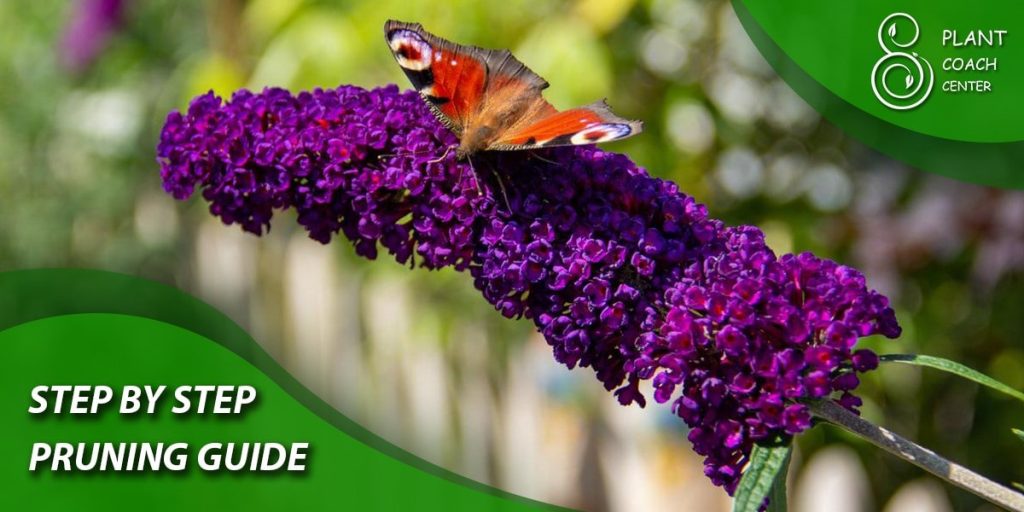
Step-by-Step Pruning Guide
Preparing for Pruning
Before you start pruning your butterfly bush, gather all the necessary tools and equipment. You’ll need a sharp pair of pruning shears or loppers, and a pruning saw for thicker branches, gardening gloves to protect your hands, and disinfectant wipes or alcohol to sterilize your cutting tools between cuts. Ensuring that your tools are clean and sharp will help prevent the spread of diseases and ensure clean cuts.
Tools and Equipment Needed
- Pruning Shears: Used for cutting small branches and stems up to ½ inch in diameter.
- Loppers: Ideal for cutting thicker branches with a diameter between ½ inch and 2 inches.
- Pruning Saw: Necessary for cutting larger branches or older wood with a diameter over 2 inches.
- Gardening Gloves: Provide protection from thorns, sharp edges, and potential irritants.
- Disinfectant Wipes or Alcohol: Use to sanitize your cutting tools between cuts to prevent the spread of diseases.
Techniques for Pruning Butterfly Bushes
- Removing Dead and Diseased Growth:
– Start by identifying and removing any dead or diseased branches. These are often discolored, brittle, or lacking new growth. Make clean cuts close to the base of the stem or branch without leaving stubs.
- Thinning Out Overcrowded Growth:
– Next, focus on thinning out crowded areas within the plant. Identify branches that cross, rub against each other, or grow inward, impeding airflow. Carefully remove these branches to encourage better air circulation and light penetration.
- Encouraging New Growth:
– To promote new growth, selectively prune back one-third of the oldest stems to a height of 6 to 12 inches above the ground. This will encourage fresh growth from the base of the plant and rejuvenate your butterfly bush.
- Shaping and Controlling Size:
– Shape your butterfly bush by selectively removing branches that disrupt the desired form. Consider the natural growth habit of the plant and aim for a balanced, open structure.
- Cleaning Up:
– After pruning, clean up the area around your butterfly bush by collecting and disposing of the pruned branches properly. Rake away any fallen leaves or debris to maintain a tidy appearance.
Pruning Specific Butterfly Bush Varieties
Pruning Buddleja Davidii
Buddleja davidii, commonly known as summer lilac, is the most popular butterfly bush species grown in gardens. When pruning Buddleja davidii, follow the guidelines mentioned in the previous section. However, remember that specific cultivars may have slightly different pruning requirements, so it’s essential to familiarize yourself with the characteristics of your chosen variety.
Pruning Buddleja Alternifolia
Buddleja alternifolia, or the alternate-leaf butterfly bush, has a unique growth habit with alternate leaves instead of the typical opposite arrangement found in other butterfly bush species. When pruning Buddleja alternifolia, focus on shaping the plant and removing old or weak stems to maintain a healthy structure.
Pruning Buddleja Lo and Behold Series
The Buddleja Lo and Behold Series is a collection of compact, dwarf butterfly bush cultivars. Pruning these varieties involves selectively removing spent flowers to encourage continuous blooming throughout the season. You can also lightly prune them in late winter or early spring to maintain their compact form.
Seasonal Pruning: A Year-Round Calendar
Winter Pruning: Pros and Cons
In regions with mild winters, some gardeners opt for winter pruning to prepare their butterfly bushes for the coming growing season. Winter pruning allows for early rejuvenation, promoting vigorous growth and larger blooms in the spring. However, winter pruning also exposes the plant to potential frost damage, especially for young, tender shoots. Gardeners in colder climates should avoid winter pruning to protect the plant from frost injury.
Spring Pruning: Ideal Timing and Techniques
For most gardeners, spring is the ideal time to prune butterfly bushes. Once the threat of frost has passed, you can assess the winter damage and start pruning. Follow the step-by-step pruning guide mentioned earlier, focusing on rejuvenation and shaping. Pruning in spring ensures that your butterfly bush has ample time to recover, produce new growth, and set flower buds for the summer.
Summer Pruning: Tips and Considerations
While not typically recommended, you can perform light pruning during the summer to remove spent flower clusters, also known as deadheading. Deadheading helps the plant conserve energy and encourages it to produce more blooms. However, avoid extensive pruning during this time, as it may stress the plant during its peak growth period.
Fall Pruning: Dos and Don’ts
Avoid fall pruning, as it can stimulate new growth that might not have enough time to harden off before winter. Tender new growth is susceptible to frost damage and could compromise the overall health of the plant. Instead, let your butterfly bush enter its dormant phase naturally, and reserve pruning for late winter or early spring.
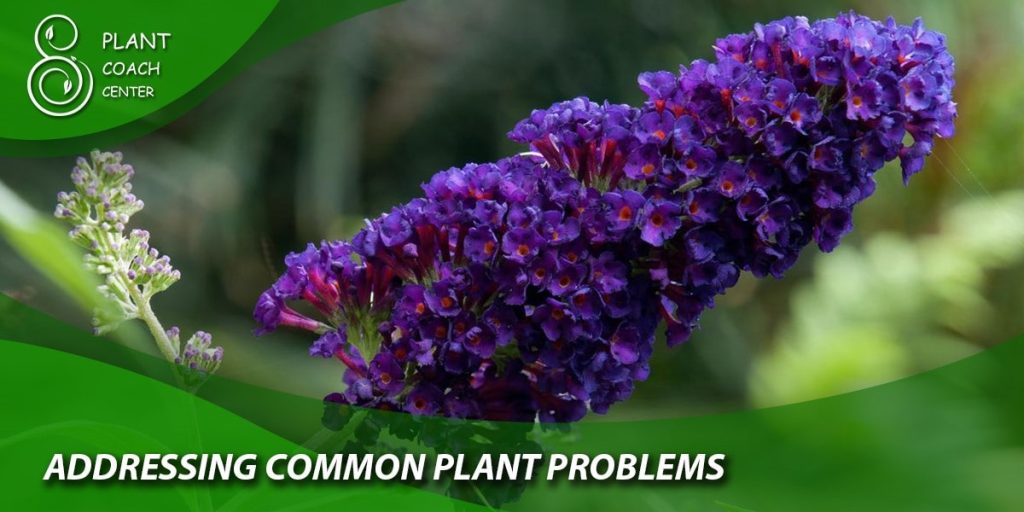
Addressing Common Plant Problems
Pests and Diseases Affecting Butterfly Bushes
Despite their resilience, butterfly bushes can still face challenges in the form of pests and diseases. Common pests include aphids, spider mites, and caterpillars, which can be managed through regular inspections and the application of appropriate organic insecticides. As for diseases, powdery mildew and root rot are the most prevalent. Providing proper airflow and avoiding overwatering can help prevent these issues.
Preventive Measures for Healthy Plants
Maintaining healthy butterfly bushes involves taking proactive measures to prevent problems before they occur. These measures include:
- Regularly inspect your plants for signs of pests or diseases.
- Avoid overhead watering to reduce humidity and minimize the risk of powdery mildew.
- Providing adequate spacing between plants to promote airflow and discourage overcrowding.
- Ensuring proper drainage to prevent root rot and waterlogging.
Troubleshooting Pruning Issues
Pruning can sometimes lead to unintended consequences, such as poor flowering, stunted growth, or an unattractive shape. Understanding the potential pitfalls of pruning and how to address them is essential for successful butterfly bush care.
- Poor Flowering:
– If your butterfly bush isn’t producing many flowers, ensure it receives adequate sunlight, as insufficient light can reduce flowering. Additionally, avoid over-pruning, as removing too many buds can affect bloom production.
- Stunted Growth:
– Stunted growth may result from over-pruning or pruning at the wrong time. If you suspect stunted growth, allow your plant to recover naturally and provide it with appropriate care, including proper watering and fertilization.
- Unattractive Shape:
– If your butterfly bush has an unattractive shape after pruning, consider corrective pruning during the growing season. Selectively trim back branches that are causing the issue and reshape the plant over time.
Beyond Pruning: Butterfly Bush Care
Watering and Soil Requirements
Butterfly bushes prefer well-draining soil and perform best in moderately fertile conditions. When watering your butterfly bush, aim for deep, thorough soakings rather than frequent shallow watering. This encourages the plant’s roots to grow deep into the soil and improves its ability to withstand periods of drought. However, be cautious not to overwater, as excessive moisture can lead to root rot.
Fertilizing Tips for Optimal Growth
Fertilize your butterfly bush in the spring using a balanced, slow-release fertilizer. Follow the manufacturer’s instructions for application rates and timing. Over-fertilization can lead to excessive vegetative growth at the expense of flowering. If you notice your plant is growing excessively but not producing many blooms, reduce the fertilizer application.
Mulching and Weed Control
Applying a layer of organic mulch around the base of your butterfly bush helps retain soil moisture, regulate soil temperature, and suppress weed growth. However, ensure that the mulch does not touch the plant’s stems, as this can create a damp environment and promote disease. Regularly inspect the mulched area to remove any weeds that may compete with your butterfly bush for nutrients and water.
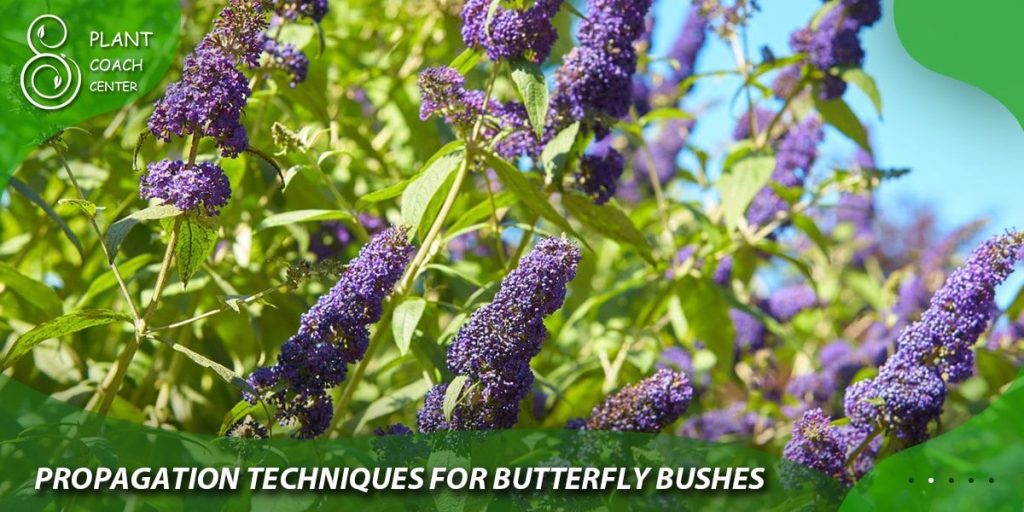
Propagation Techniques for Butterfly Bushes
Seed Propagation Step-by-Step
- Collecting Seeds: Gather seeds from mature butterfly bushes after the flowering season. Look for dried flower clusters containing small, dark seeds.
- Preparing the Soil: Choose a well-draining, fertile potting mix. Fill small pots or seed trays with the soil mixture.
- Sowing the Seeds: Sow the seeds on the soil surface and lightly press them down. Do not cover them with soil, as they need light to germinate.
- Watering: Gently water the seeds using a spray bottle or a fine mist to avoid displacing them.
- Providing Warmth and Light: Place the pots or trays in a warm location with bright, indirect light.
- Germination: The seeds should germinate within 1 to 3 weeks. Once the seedlings have developed several leaves, transplant them into individual containers.
Rooting Cuttings Successfully
- Selecting Cuttings: Take 4 to 6-inch cuttings from healthy, non-flowering stems during the growing season.
- Removing Lower Leaves: Remove the lower leaves from the cuttings, leaving a few leaves at the tip.
- Hormone Treatment (Optional): Dip the cut end of the stem in a rooting hormone to encourage root development.
- Planting Cuttings: Plant the cuttings in a well-draining potting mix and water lightly.
- Creating a Mini-Greenhouse: Cover the container with a clear plastic bag to create a humid environment.
- Providing Light: Place the cuttings in a warm location with bright, indirect light.
- Root Development: Check for root development after a few weeks. Once roots are established, transplant the cuttings into individual pots.
Division of Mature Plants
- Digging up the Plant: In late winter or early spring, carefully dig up the mature butterfly bush.
- Dividing the Roots: Use a sharp knife or garden spade to divide the plant’s root ball into several sections.
- Replanting: Replant each divided section into its own hole, making sure to water thoroughly.
Pruning and Wildlife Conservation
Attracting Butterflies and Pollinators
Butterfly bushes are aptly named for their ability to attract butterflies and other pollinators. By providing a nectar-rich food source, you can create a welcoming environment for these beneficial insects. In addition to butterfly bushes, consider planting other pollinator-friendly plants, such as milkweed, coneflowers, and bee balm, to support a diverse range of butterflies and pollinators.
Ethical Considerations for Wildlife-Friendly Pruning
As you prune your butterfly bush, it’s important to be mindful of the wildlife that may rely on it for nectar and shelter. Avoid pruning during peak butterfly activity, such as sunny afternoons, to minimize disruption. Additionally, leave some spent flower clusters on the plant to provide food for butterflies and other insects during the winter months.
Supporting Biodiversity in Your Garden
To create a thriving ecosystem in your garden, embrace biodiversity by incorporating various plant species, using organic gardening practices, and avoiding the use of harmful pesticides. A diverse garden not only benefits wildlife but also contributes to the overall health and resilience of your garden ecosystem.
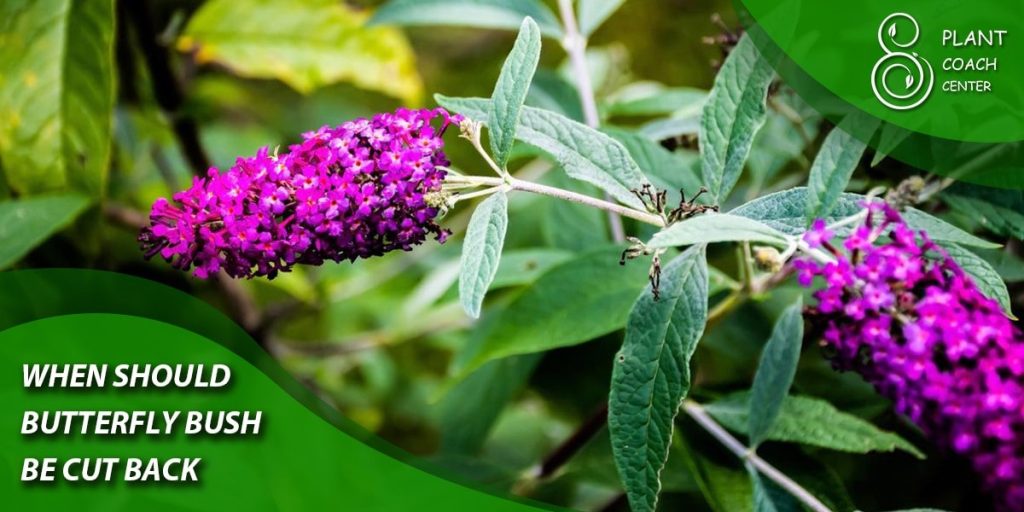
Frequently Asked Questions (FAQs)
Common Queries about Butterfly Bush Pruning
- Can I prune my butterfly bush in the fall?
– Pruning butterfly bushes in the fall is generally not recommended, as it may stimulate new growth that is susceptible to frost damage. Wait until late winter or early spring to prune.
- My butterfly bush has become overgrown. Can I rejuvenate it through pruning?
– Yes, you can rejuvenate an overgrown butterfly bush through pruning. Follow the rejuvenation pruning technique mentioned earlier in the article to encourage new growth and restore its shape.
- When is the best time to deadhead my butterfly bush?
– Deadheading can be done throughout the growing season to remove spent flower clusters and encourage continuous blooming.
Expert Answers and Tips
To ensure the information provided in this article is well-rounded and reliable, we’ve reached out to gardening experts and professionals in the field of horticulture. Here are some insights and tips from these experts:
Conclusion
In conclusion, pruning your butterfly bush is an essential aspect of its care, contributing to its health, appearance, and ability to attract pollinators. By understanding the appropriate pruning techniques and considering the specific needs of your plant, you can confidently care for your butterfly bush throughout the year.
Encouragement to Practice Pruning Skills
Pruning is both an art and a science, and mastering this skill takes time and practice. Don’t be discouraged if you encounter challenges or make mistakes along the way. Gardening is a continuous learning process, and each experience contributes to your growth as a gardener.
Emphasizing the Beauty and Benefits of Butterfly Bushes
Butterfly bushes are captivating plants that enrich your garden with vibrant colors, delightful fragrances, and the mesmerizing presence of butterflies and other pollinators. By dedicating time and effort to their care, you can create a haven for wildlife, foster biodiversity, and experience the joy of cultivating a beautiful and thriving garden.
Remember, the journey of gardening is as rewarding as the destination, so enjoy every moment of tending to your butterfly bushes and witnessing the magic they bring to your outdoor space. Happy gardening!
When should I prune my butterfly bush?
Prune in late winter or early spring.
How do I rejuvenate an overgrown butterfly bush?
Follow rejuvenation pruning, cutting back to 6-12 inches.
Can I deadhead my butterfly bush?
Yes, deadhead to encourage continuous blooming.


